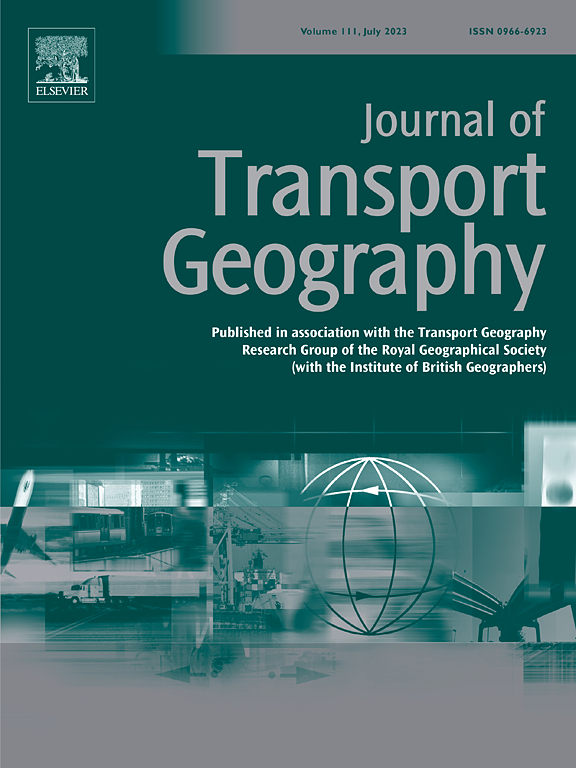评估移动电话数据作为交通地理学研究的代理人口普查通勤数据:一个批判性的回顾和案例研究
IF 6.3
2区 工程技术
Q1 ECONOMICS
引用次数: 0
摘要
人口普查通勤数据集支持了许多关于通勤到工作的空间模式的研究,但现在收集此类数据的人口普查越来越少。新冠疫情后工作实践的重大变化需要2020年代中期的通勤数据,这使得任何2020/1年人口普查通勤数据集都不那么相关。详细的地理研究需要局部尺度的通勤流矩阵,而抽样调查无法提供类似人口普查的颗粒数据集。人口普查数据可用性的下降刺激了人们对“大”数据的兴趣,尤其是来自移动电话的数据。本文提供了一个使用移动电话数据作为人口普查通勤数据的代理来定义劳动力市场区域的案例研究。该案例研究是西班牙的,并举例说明了任何使用移动电话数据的交通地理研究中可能出现的问题。论文首先列举了这些数据与大多数人口普查通勤数据集之间的许多“不匹配”。通勤研究的一个关键问题是,许多手机所有者/用户不是工人,但出于商业和保密考虑,阻止了元数据的发布,因此不能将非工人排除在这种形式的“通勤”数据之外。在这项工作中,我们展示了一种过滤掉大多数非工作流以更好地近似实际通勤流的方法。我们的研究结果表明,经过适当转换的移动电话数据可能是人口普查通勤数据流的有用替代品。然而,拥有同一地区和同一时期的两个来源的数据对于充分证实这一结论仍然至关重要。本文章由计算机程序翻译,如有差异,请以英文原文为准。
Assessing mobile phone data as proxy census commuting data for transport geography research: a critical review and case study
Census commuting datasets underpin much research on spatial patterns of journey-to-work but fewer Censuses now collect such data. Major post-Covid changes to working practices call for mid-2020s commuting data, making any Census 2020/1 commuting datasets less relevant. Detailed geographical research needs commuting flow matrices at a local scale, and sample surveys cannot provide Census-like granular datasets. Declining Census data availability has stimulated growing interest in ‘big’ data, and data from mobile phones in particular. This paper provides a case study of using mobile phone data as a proxy for Census commuting data to define labour market areas. The case study is of Spain and exemplifies issues that can arise in any transport geography research using mobile phone data. The paper first itemises numerous ‘mismatches’ between such data and most Census commuting datasets. A critical problem for commuting studies is that many mobile owners/users are not workers, but commercial and confidentiality concerns prevent the release of metadata, and so non-workers cannot be excluded from this form of ‘commuting’ data. In this work we demonstrate a method to filter out most non-working flows to better approximate actual commuting flows. Our results suggest that mobile phone data, with appropriate transformations, may be a useful substitute for Census commuting data flows. However having data from both sources for the same territory and period remains vital to fully validate this conclusion.
求助全文
通过发布文献求助,成功后即可免费获取论文全文。
去求助
来源期刊

Journal of Transport Geography
Multiple-
CiteScore
11.50
自引率
11.50%
发文量
197
期刊介绍:
A major resurgence has occurred in transport geography in the wake of political and policy changes, huge transport infrastructure projects and responses to urban traffic congestion. The Journal of Transport Geography provides a central focus for developments in this rapidly expanding sub-discipline.
 求助内容:
求助内容: 应助结果提醒方式:
应助结果提醒方式:


